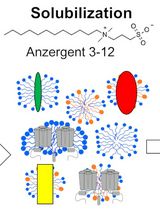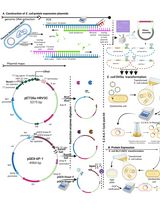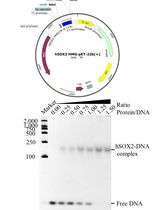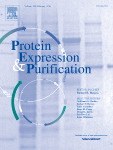- Submit a Protocol
- Receive Our Alerts
- Log in
- /
- Sign up
- My Bio Page
- Edit My Profile
- Change Password
- Log Out
- EN
- EN - English
- CN - 中文
- Protocols
- Articles and Issues
- For Authors
- About
- Become a Reviewer
- EN - English
- CN - 中文
- Home
- Protocols
- Articles and Issues
- For Authors
- About
- Become a Reviewer
Purification of Antigen 85 Complex of Mycobacterium tuberculosis
Published: Vol 3, Iss 3, Feb 5, 2013 DOI: 10.21769/BioProtoc.324 Views: 11720

Protocol Collections
Comprehensive collections of detailed, peer-reviewed protocols focusing on specific topics
Related protocols

Expression and Purification of the Human Voltage-Gated Proton Channel (hHv1)
Emerson M. Carmona [...] Luis G. Cuello
Jun 20, 2025 1725 Views

Thermus thermophilus CRISPR Cas6 Heterologous Expression and Purification
Junwei Wei [...] Yingjun Li
Jul 20, 2025 1732 Views

Prokaryotic Expression and Purification of the hSox2-HMG Domain
Lijie Yang [...] Jingjun Hong
Aug 20, 2025 1962 Views
Abstract
Serodiagnosis of tuberculosis using purified native antigens is one of the approaches for the early detection of TB. The Antigen 85 complex consisting of Ag 85A, 85B and 85C are the most abundant antigens in the culture supernatant of mycobacteria. It has also been shown to be the immunodominant (the property of an antigenic determinant that causes it to be responsible for the major immune response in a host) antigens of CFA (culture filtrate antigens – proteins secreted by mycobacteria into the culture medium). This protocol gives the details for purification of the Ag85 complex from CFA and also the method of isolation of the individual components of the complex by column chromatography.
Materials and Reagents
- NaH2PO4
- EDTA
- DTT
- Tris
- NaCl
- Glycine
- Ethylene glycol
- HCI
- QAE Sepharose Column Starting buffer (see Recipes)
- QAE Sepharose Column Elution buffer (see Recipes)
- Buffer A (see Recipes)
- Buffer B (see Recipes)
- Buffer C (see Recipes)
Equipment
- High Performance Liquid Chromatography (HPLC) system (Millenium V2.00, Waters, USA)
- SDS-PAGE (Mini-PROTEAN® Tetra Cell, catalog number: 165-8000 )
- Phenyl Sepharose HP column (3.5 x 1 cm) (GE Healthcare, catalog number: 17-1082-01 )
- QAE sepharose column (Amersham Pharmacia – anion exchange chromatography).
Procedure
- Purification of 30 kDa antigen:
The secreted Antigen 85 complex of mycobacteria consists of three proteins Ag 85A, B and C. Among these Antigen 85B otherwise known as 30 kDa antigen is one of the major immunogenic antigen.
The 30 kDa antigen was purified from the whole culture filtrate of M. tuberculosis by first passing through QAE column followed by passing the 30 kDa enriched fraction through a Phenyl Sepharose hydrophobic interaction column.
- Anion exchange chromatography-QAE sepharose (purification of Ag85 complex)
(PURIFICATION OF AG 85 COMPLEX)
- Culture filtrate antigen (CFA) between 10 to 30 mg was prepared as mentioned in the 38 kDa antigen purification protocol (Hyperlink here) was separated into multiple fractions by passing through a prepacked anion exchange column of QAE Sepharose. 0.05 M Tris-HCI buffer (pH 8.1) was used as the starting buffer and 0.05 M Tris-HCI, pH 8.1, with 1.0 M sodium chloride was used as the elution buffer. The separation was carried out in the High Performance Liquid Chromatography (HPLC, Millenium V2.00, Waters, USA) system under standard running conditions. The eluted fractions were analyzed on 12.5% SDS-PAGE which separates proteins based on its molecular weight, was run under standard conditions (120 V, 1.5 A). The Ag85 complex is identified as a 30/31 kDa doublet band on the gel. The fractions containing Antigen 85 complex were pooled and concentrated by Amicon centrifuge filters with the molecular cut off of 3 kDa.
- Further purification of the A, B and C components from the antigen 85 complex was done by passing it through the hydrophobic interaction chromatography (HIC) column namely the Phenyl Sepharose HP column.
- Hydrophobic interaction chromatography-phenyl sepharose (separation of the individual components of the antigen 85 complex)
- Purification of the antigen 85 complex into its individual components Ag 85A; 85B and 85C was done by passing it through the Phenyl Sepharose HP column using the Biologic Chromatography system (FPLC, Bio-Rad, USA). Three different buffers were used during the run. The buffers A, B, C used are mentioned under recipes section.
- The run conditions were such that the column was subjected to an isocratic flow of Buffer A for 10 min (flow rate 1 ml/min), followed by the injection of the sample (2 ml) which was dialysed against buffer A at the rate of 0.5 ml/min. Then an isocratic flow of Buffer B for 10 min at the rate of 1 ml/min was used for washing the unbound material.
- Elution of the individual components of Antigen 85 complex namely Ag85A, B and C were carried out with a linear gradient of Buffer C (from 0 -100%) for 30 min with the flow rate of 1 ml/min. Subsequently, the protein containing fractions were identified by optical density measured at 280 nm on a spectrophotometer. The fractions containing Ag 85B were pooled, concentrated and checked on 12.5% SDS PAGE for purity.
- Purification of the antigen 85 complex into its individual components Ag 85A; 85B and 85C was done by passing it through the Phenyl Sepharose HP column using the Biologic Chromatography system (FPLC, Bio-Rad, USA). Three different buffers were used during the run. The buffers A, B, C used are mentioned under recipes section.
- Anion exchange chromatography-QAE sepharose (purification of Ag85 complex)
Recipes
- QAE Sepharose Column Starting buffer
0.05 M Tris-HCI (pH 8.1)
- QAE Sepharose Column Elution buffer
0.05 M Tris-HCI (pH 8.1)
1 M NaCl
- Buffer A
0.01 M NaH2PO4
1 mM EDTA
1 mM DTT (pH 6.8)
- Buffer B
0.01 M Tris
100 mM Glycine
1 mM EDTA
1 mM OTT(pH 8.9)
- Buffer C
0.01 M Tris
100 mM Glycine
1 mM DTT
50% (v/v) Ethylene Glycol (pH 8.9)
Acknowledgments
This protocol was extracted from the original publication by Devi et al. (2002). This work was supported by Indo US VAP & DBT India granted for Dr. Alamelu Raja.
References
- Devi, K. R., Kumar, K. S., Ramalingam, B. and Alamelu, R. (2002). Purification and characterization of three immunodominant proteins (38, 30, and 16 kDa) of Mycobacterium tuberculosis. Protein Expr Purif 24(2): 188-195.
- Raja, A., Uma Devi, K. R., Ramalingam, B. and Brennan, P. J. (2004). Improved diagnosis of pulmonary tuberculosis by detection of free and immune complex-bound anti-30 kDa antibodies. Diagn Microbiol Infect Dis 50(4): 253-259.
Article Information
Copyright
© 2013 The Authors; exclusive licensee Bio-protocol LLC.
How to cite
Ranganathan, U. D. and Raja, A. (2013). Purification of Antigen 85 Complex of Mycobacterium tuberculosis. Bio-protocol 3(3): e324. DOI: 10.21769/BioProtoc.324.
Category
Biochemistry > Protein > Isolation and purification
Do you have any questions about this protocol?
Post your question to gather feedback from the community. We will also invite the authors of this article to respond.
Tips for asking effective questions
+ Description
Write a detailed description. Include all information that will help others answer your question including experimental processes, conditions, and relevant images.
Share
Bluesky
X
Copy link








